The ancient Mayans left behind a rich and enigmatic legacy, with a pantheon of divine deities that played a central role in their beliefs and rituals. From the powerful Storm Keeper, Huracan, to the graceful Moon Goddess, Ixchel, these gods and goddesses were revered and worshipped by the Mayan people. In this article, we will delve into the world of Mayan mythology, exploring the fascinating stories, creation myths, and legends surrounding these divine beings. We will also uncover the rituals, worship practices, and the profound influence that Mayan mythology had on their society as a whole. Prepare to embark on a journey through the captivating realm of the ancient Mayan gods and goddesses.
Contents
- The Pantheon of Gods and Goddesses
- Creation Myths and Legends
- Rituals and Worship
- Influence on Mayan Society
- Conclusion
-
Frequently Asked Questions
- 1. Who was the most powerful deity in Mayan mythology?
- 2. What were some other significant gods and goddesses in Mayan mythology?
- 3. What were the creation myths in Mayan mythology?
- 4. What legendary tale involved the defeat of the Lords of Xibalba?
- 5. How did the Mayans practice divination and prophecy?
- 6. What was the significance of blood sacrifice in Mayan rituals?
- 7. How did Mayan society incorporate mythology into their political structure?
- 8. How did Mayan mythology influence art and architecture?
- 9. What role did shamans play in Mayan society?
- 10. What was the significance of the Mayan calendar and its connection to astronomy?
- References
-
Frequently Asked Questions
- 1. Who were the divine deities in Mayan mythology?
- 2. Why is Huracan known as the Storm Keeper?
- 3. What was the role of Ixchel, the Moon Goddess, in Mayan mythology?
- 4. What made Itzamna the Supreme Being in Mayan mythology?
- 5. Who was Kukulkan, the Feathered Serpent, in Mayan mythology?
- 6. What role did Chac, the Rain God, play in Mayan civilization?
- 7. What is the Popol Vuh, and how does it relate to the creation of the world?
- 8. Who were the Hero Twins, and what was their significance in Mayan mythology?
- 9. What is the myth of the Four Suns in Mayan mythology?
- 10. How did Mayans use rituals and ceremonies to worship their deities?
- References
- Read More
The Pantheon of Gods and Goddesses
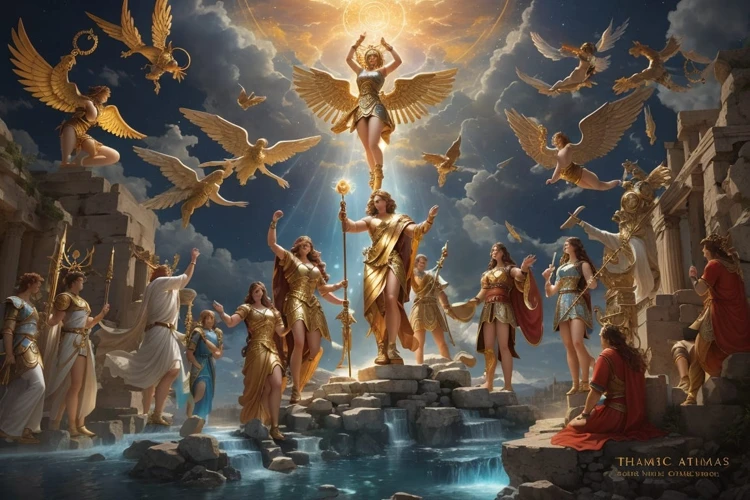
Mayan mythology is replete with a remarkable pantheon of gods and goddesses that captivated the imagination of the ancient civilization. Among these divine beings is Huracan, the tempestuous Storm Keeper, revered for his control over hurricanes and storms. Another prominent deity is Ixchel, the ethereal Moon Goddess, associated with fertility, childbirth, and lunar cycles. The Mayans also worshipped Itzamna, the Supreme Being and creator of all things. He was believed to govern writing, wisdom, and healing. The Feathered Serpent, Kukulkan, was venerated as a deity of wind and rain, as well as being a harbinger of knowledge and civilization. The Rain God, Chac, was honored for his ability to bring crucial rainfall to sustain crops and ensure agricultural prosperity. Through these divine figures, the Mayans found guidance, protection, and meaning in their lives. Explore more about the intriguing mythology and symbolism of these celestial beings here and discover their influence on art and literature here.
1. Huracan, the Storm Keeper
Huracan, known as the Storm Keeper, was a prominent deity in Mayan mythology revered for his control over hurricanes and storms. As the god of wind and chaos, he was both feared and respected by the Mayan people. According to legend, Huracan was one of the deities responsible for the creation of the world, alongside other gods. He was portrayed as a mighty figure with a serpent for a leg, symbolizing his connection to the power of storms. The Mayans believed that Huracan had the ability to summon destructive hurricanes and powerful winds, which had the potential to bring devastation or renewal to the land. This duality of destruction and renewal made Huracan a complex and enigmatic figure in Mayan mythology. Worship of Huracan involved elaborate rituals and ceremonies to appease his wrath and seek his favor. The Storm Keeper’s influence extended beyond just the physical realm of weather, as he was also associated with change, transformation, and the unpredictable forces of nature. To understand the intricate interactions between different zodiac signs, explore the fascinating realm of astrology and unravel the intricacies of Gemini-Libra interactions.
2. Ixchel, the Moon Goddess
In the pantheon of Mayan deities, Ixchel holds a sacred place as the revered Moon Goddess. Known as the embodiment of fertility, childbirth, and lunar cycles, she was a central figure in Mayan mythology and religion. Ixchel was often depicted as a young woman wearing a headdress adorned with a crescent moon. She was associated with the Earth’s natural rhythm and the transformative power of the moon phases. It was believed that Ixchel had the ability to control rain and regulate the fertile cycles of nature.
Ixchel played a crucial role in fertility rituals and was considered the patron deity of midwives and women in labor. Many Mayan women sought her guidance and protection during pregnancy and childbirth, and temples dedicated to Ixchel were important centers for women’s health and fertility rites. Women would often make offerings to Ixchel, such as textiles and clay figurines, in hopes of ensuring a safe and successful pregnancy.
The Moon Goddess was not just confined to her role in fertility; she also represented wisdom and insight. It was believed that Ixchel had extensive knowledge of herbal medicine, healing practices, and divination. Mayan healers and shamans looked to Ixchel for guidance and invoked her name during their rituals, asking for her assistance in curing illnesses and bringing about spiritual balance.
The influence of Ixchel extended beyond the realm of mythology and religion. The Moon Goddess found representation in Mayan art and architecture, with her iconic image gracing murals, pottery, and temple carvings. Her headdress, featuring the crescent moon, became a distinctive symbol associated with the power of the moon and its connection to fertility and feminine energy.
Even today, the legacy of Ixchel as the Moon Goddess lives on in Mayan culture. Her role as a protector of women and a bringer of fertility continues to be celebrated and revered by those who follow the ancient Mayan traditions. The impact of Ixchel, the Moon Goddess, on Mayan mythos and society is a testament to the profound significance of lunar cycles and feminine forces in the worldview of the Mayan people.
3. Itzamna, the Supreme Being
Itzamna, the Supreme Being, held a position of utmost importance in the Mayan pantheon. As the creator of all things, Itzamna was revered as the deity of writing, wisdom, and healing. Depicted as an elderly man with a toothless mouth, he was often associated with serpents, symbolizing his connection to the supernatural realm. Itzamna was believed to have given the Mayans the sacred gift of writing, making him a patron of scribes and scholars. He was also revered for his vast wisdom, serving as a source of knowledge and guidance for the Mayan people.
One prominent aspect of Itzamna’s domain was healing. It is said that he possessed immense curative powers and could banish illnesses and ailments. Mayans would offer prayers and seek the intercession of Itzamna in times of sickness or injury, believing that he had the ability to restore health and well-being. Herbal remedies played a vital role in Mayan healing practices, and Itzamna was seen as the guardian of this knowledge.
The Mayans believed in the existence of multiple realms, including the celestial, earthly, and underworld. Itzamna was considered the connection between these realms, acting as a bridge and maintaining balance between the different aspects of existence. This made him a significant figure in various religious ceremonies and rituals.
To honor the Supreme Being, the Mayans built temples and sacred sites in his name. These structures were adorned with intricate carvings and sculptures representing Itzamna’s imagery, often showcasing his association with serpents and wisdom. The worship of Itzamna was an integral part of Mayan society, and his influence extended beyond religious domains.
Itzamna, the Supreme Being, played a multifaceted role in Mayan mythology and society. Revered as the creator, healer, and source of wisdom, he represented the divine connection between different realms. The Mayans viewed him as the guardian of writing and knowledge, seekers of his intercession during times of illness or injury. The temples dedicated to Itzamna stood as tangible expressions of their reverence, adorned with his symbols and imagery. The legacy of Itzamna continues to fascinate and mystify, offering a glimpse into the religious beliefs and practices of the ancient Mayan civilization.
4. Kukulkan, the Feathered Serpent
Kukulkan, the Feathered Serpent, was one of the most revered deities in Mayan mythology. Often depicted as a combination of a serpent and a bird, this formidable deity played a pivotal role in Mayan cosmology. Kukulkan was associated with various aspects of nature, embodying the power of wind and rain. As the bringer of knowledge and civilization, Kukulkan was highly regarded as the patron of priests, intellectuals, and rulers. His presence was believed to inspire wisdom, innovation, and enlightenment among the Maya people. The feathered serpent motif was commonly found in Mayan art and architecture, symbolizing the connection between the terrestrial and the celestial realms. Kukulkan’s temples, such as the iconic El Castillo in Chichen Itza, showcased the architectural prowess of the Mayans and their deep reverence for this divine entity. The worship of Kukulkan, with its rich symbolism and spiritual significance, permeated all aspects of Mayan society, from religious ceremonies to political leadership. The legacy of Kukulkan, the Feathered Serpent, remains a testament to the profound influence of mythology in shaping the beliefs and cultural practices of the ancient Mayans.
5. Chac, the Rain God
The Mayan civilization greatly revered Chac, the Rain God, for his vital role in ensuring agricultural prosperity and sustaining life on Earth. Depicted as a fearsome deity with a reptilian appearance, Chac was believed to have dominion over rain, lightning, and thunderstorms. Often portrayed with a long, curved nose and large, round eyes, Chac was seen as both a benevolent and wrathful figure, possessing the power to either bring forth life-giving rains or unleash destructive floods. His ability to control the rainfall made him a crucial deity for Mayan farmers, as their agricultural success depended on a favorable climate. Chac was also associated with fertility, with rituals and offerings dedicated to him in hopes of ensuring bountiful harvests. Despite his awe-inspiring nature, Chac held a prominent place in the hearts of the Mayan people, as his powers and influence were seen as essential for their survival and well-being.
Creation Myths and Legends
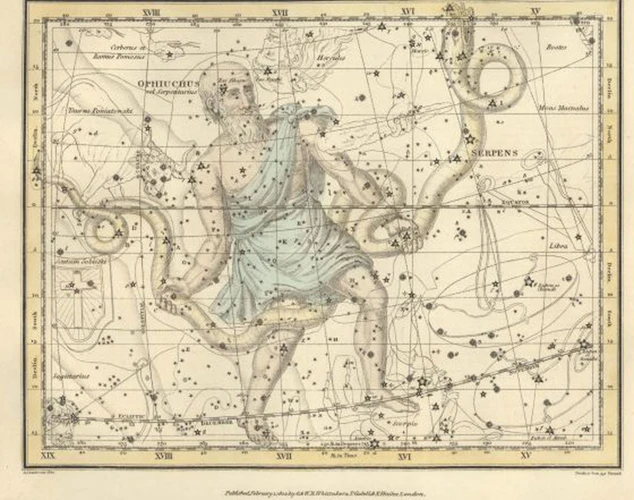
The Mayan civilization has a rich tapestry of creation myths and legends that shed light on their beliefs about the origins of the world. One of the most renowned creation myths is The Popol Vuh, which recounts the birth of the world and the subsequent rise of human beings. It tells the tale of the Hero Twins, Hunahpu and Xbalanque, who embark on a perilous journey to defeat the Lords of Xibalba, the underworld. Another captivating legend is The Myth of the Four Suns, which describes the cyclical destruction and rebirth of different worlds. The captivating Story of the Maize God reveals the importance of agriculture and the connection between maize and human life. These myths and legends provided the Mayans with a profound understanding of their place in the universe and the forces that shaped their existence.
1. The Popol Vuh: Creation of the World
The Popol Vuh is a sacred text that recounts the creation of the world according to Mayan mythology. In the story, the gods sought to create beings capable of worshipping and revering them. After attempting to form humans from various materials including mud and wood, they finally succeeded in fashioning humans out of maize dough. This act emphasized the significance of maize in Mayan culture as both a staple food source and a symbol of life and sustenance. The gods then attempted to create beings that would pay tribute to them through prayer and worship. However, the first set of humans proved to be unfaithful and disrespectful, causing the gods to become angry and regretful. As a result, a great flood was sent to destroy humanity. However, a few humans survived and through their perseverance and obedience, they were given guidance by the gods and ultimately became the ancestors of the present-day Mayan people. The Popol Vuh serves as a fundamental narrative in Mayan mythology, outlining the origins of humanity and the relationship between gods and humans. It holds significant cultural and spiritual value, shedding light on the Mayan worldview and providing insights into their beliefs and traditions.
2. The Hero Twins: Defeating the Lords of Xibalba
The Hero Twins: Defeating the Lords of Xibalba
The story of the Hero Twins is one of the most iconic and significant myths in Mayan mythology. According to the legend, the Hero Twins, Hunahpu and Xbalanque, were twin brothers born to a human woman named Xquic. These audacious and courageous brothers embarked on a perilous journey to defeat the Lords of Xibalba, the Mayan underworld. The Lords of Xibalba were a group of devious and powerful deities who imposed suffering and challenges upon humanity. The twins faced a series of trials, including deadly ball games, tests of endurance, and encounters with malicious creatures.
Through their intelligence, cunning, and supernatural abilities, the Hero Twins not only survived these trials but triumphed over the Lords of Xibalba, bringing justice and knowledge back to the world of the living. Their victory symbolizes the triumph of good over evil and the valor of the human spirit. The tale of the Hero Twins serves as a powerful reminder of the Mayan belief in the importance of resilience, courage, and the eternal struggle against darkness.
This epic myth has inspired numerous works of art, literature, and even modern interpretations. The story of the Hero Twins showcases the vibrant imagination and storytelling prowess of the ancient Mayans, emphasizing their deep connection to the spiritual realm and their understanding of the eternal struggle between light and darkness. Explore more about the interactions between Gemini and Libra, which also symbolize duality and balance, here.
3. The Myth of the Four Suns
In Mayan mythology, the captivating tale of “The Myth of the Four Suns” holds significant importance. According to this myth, there have been four different attempts to create human beings and establish a stable civilization. Each attempt was represented by a different sun.
The first sun was called 4. Ehecatl and was associated with the element of air. Unfortunately, humans during this era were said to have no mouths and were ultimately destroyed by hurricanes.
The second sun was known as Tletl, symbolizing fire. This era saw humans with hearts of ash, leading to their demise when the world was engulfed in flames.
The third sun, Tonatiuh, embodied the element of fire. Humans during this time were characterized by perpetual warfare and conflict, resulting in their destruction through a rain of fire.
Finally, the current sun, called 4. Nahui Ollin, represents movement. According to the myth, this era is associated with the present world and is characterized by the sun’s movement across the sky. It is believed that this cycle will eventually come to an end, signifying the end of the world as we know it.
The myth of the four suns not only serves as an origin story but also conveys the Mayans’ understanding of the cyclical nature of time and the impermanence of human existence. It offers a profound perspective on the fragility of civilizations and the need for balance and harmony within the world. The legend also reflects the Mayans’ deep connection to nature and their reverence for the elemental forces that shape their lives. It is a fascinating myth that enhances our understanding of the intricate belief system of the Mayan civilization.
4. The Story of the Maize God
In Mayan mythology, the story of the Maize God holds great significance. Maize, or corn, played a vital role in the Mayan civilization as a staple food crop, and thus the Maize God symbolized sustenance, fertility, and abundance. According to the myth, the Maize God undertook a journey to the underworld, facing numerous trials and challenges along the way. He eventually met his demise, but from his death sprouted new life and the harvest of maize. This story symbolizes the cycle of life, death, and rebirth, mirroring the agricultural cycle of planting, growth, harvest, and regeneration. The Maize God was often depicted as a young man adorned with green maize leaves or depicted being reborn from a maize stalk. This myth served as a reminder to the Mayan people of the interconnectedness between nature, agriculture, and the divine. The story of the Maize God resonated deeply within Mayan society, shaping their perspectives on life, sustenance, and the cyclical nature of existence.
Rituals and Worship
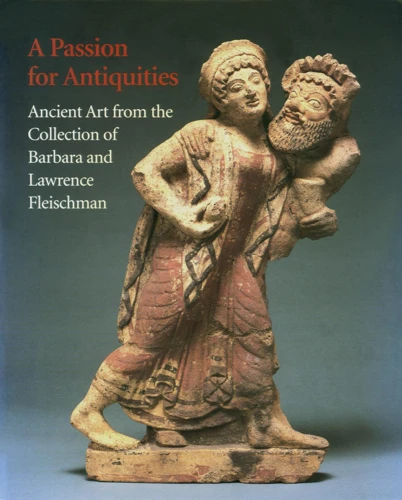
Rituals and worship played a vital role in Mayan society, serving as a means to communicate with and appease the divine entities they revered. Central to their religious practices was the concept of blood sacrifice, believed to nourish the gods and ensure the balance of the universe. This included offerings of animals, crops, and even human sacrifices. The Mayans also held sacred ceremonies and performed rituals at elaborate temples, which served as the physical connections between the earthly realm and the spiritual realm. Divination and prophecy were other important components of Mayan rituals, where priests interpreted omens and sought guidance from the gods about various aspects of life, including agriculture, warfare, and governance. Shamans, with their deep spiritual connections, played a crucial role in healing practices and were believed to have the ability to communicate with the divine realms. The rituals and worship of the Mayans reflected their strong belief in the interconnectedness of the human world and the spiritual realm, guiding their actions and shaping their understanding of the universe.
1. The Importance of Blood Sacrifice
The Mayans believed that blood sacrifice played a crucial role in their religious and spiritual practices, symbolizing the exchange of life force and energy between humans and the divine realm. The act of offering blood was seen as a way to nourish and appease the gods, ensuring their favor and protection. Blood sacrifice was a significant aspect of Mayan ritual ceremonies, and various methods were employed, including self-inflicted bloodletting, animal sacrifices, and, in extreme cases, human sacrifices. Ritual bloodletting involved piercing the body or tongue with sharp objects such as obsidian blades or stingray spines, allowing the blood to flow as an offering. Animals, such as deer or birds, were also sacrificed, and their blood was often poured over sacred objects or altars. The Mayans believed that the essence of life resided in blood, and by offering it to the gods, they maintained the cosmic balance and strengthened their bond with the divine forces. It was believed that without blood sacrifice, the gods would become weakened and chaos would ensue. The practice of blood sacrifice permeated every aspect of Mayan society and was a deeply ingrained tradition that demonstrated their commitment and devotion to the divine.
2. Sacred Ceremonies and Temples
Sacred ceremonies and temples held immense importance in the Mayan civilization, as they served as sacred spaces for worship, rituals, and communication with the divine. These ceremonies often revolved around offerings and sacrifices to appease the gods and seek their blessings. Mayan temples, or pyramids, were meticulously constructed with precise alignments to celestial bodies and served as physical representations of the sacred connection between the earthly and spiritual realms. Each temple was dedicated to a specific deity and adorned with intricate carvings and sculptures depicting divine scenes and symbols. These architectural marvels not only showcased the advanced engineering skills of the Mayans but also provided a focal point for religious and social gatherings. Inside the temples, sacred rituals took place, led by priests who acted as intermediaries between the people and the gods. These rituals involved chanting, dancing, and the burning of incense, creating an atmosphere of reverence and spirituality. The temples also housed important artifacts and codices that held valuable knowledge and religious texts. Today, many of these impressive temples still stand, allowing us to marvel at the profound devotion and architectural achievements of the ancient Mayans.
3. Divination and Prophecy
Divination and prophecy held a significant role in Mayan society, where the ability to foresee the future was highly regarded. Mayan priests and shamans developed various techniques to access the spiritual realm and gain insight into forthcoming events. One of the most notable forms of divination was the interpretation of dreams. Dreams were seen as messages from the gods, and specific symbols and events within dreams were believed to hold significant meaning. The priests would meticulously analyze the content of the dreams to offer guidance and predictions to individuals and communities.
Another common method of divination was through the use of the Mayan calendar system. The Mayans had a complex and sophisticated calendar that allowed them to track celestial cycles and determine auspicious times for events and rituals. By consulting the calendar, priests could make predictions about the future based on the alignment of the stars, planets, and other celestial bodies.
The practice of scrying, or gazing into reflective surfaces, was also a prevalent form of divination. Ancient Mayans believed that staring into mirrors, bowls of water, or obsidian stones could reveal hidden knowledge or visions from the spiritual realm. These practices were often performed in sacred temples or during important ceremonies, where the priests would interpret the visions or symbols seen in the reflections.
Divination and prophecy played a vital role in decision-making, such as determining the best time to go to war, when to plant crops, or when to conduct religious ceremonies. The insights gained through divination were not only significant on an individual level but also influenced the actions and direction of the entire Mayan society.
Influence on Mayan Society
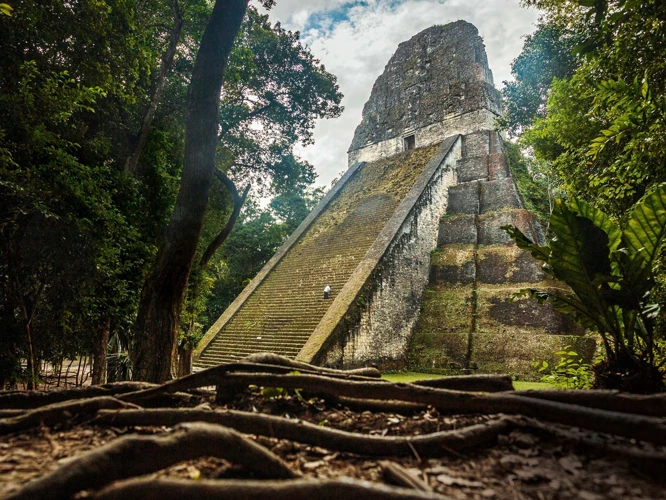
The influence of Mayan mythology on their society was profound and far-reaching. From a political and social perspective, the divine beings played a significant role in legitimizing the authority and power of rulers. By claiming divine lineage, Mayan leaders asserted their right to rule and maintain order within their city-states. The gods and goddesses were also integral to the artistic and architectural expressions of the Mayans. Temples and sacred structures were constructed to honor and house these divine entities, with intricate carvings and artwork depicting their stories and symbolism. The Mayan calendar system and astronomy were deeply intertwined with their mythology, allowing them to navigate their agricultural and religious practices. Through their rituals, worship, and belief in divination and prophecy, the Mayans sought guidance, made predictions, and sought solutions for their daily lives. Consequently, Mayan mythology permeated every aspect of their society, shaping their beliefs, practices, and cultural identity.
The Mayan mythology had profound political and social implications within their society. The belief in divine deities and their roles in the world governed the hierarchy and power dynamics among the Mayan people. The rulers of Mayan city-states often claimed divine descent or direct divine authority, solidifying their position as the intermediary between the gods and the people. The influence of the gods influenced decision-making processes, particularly in matters of warfare, alliances, and governance. The rituals and ceremonies associated with the gods were a crucial part of Mayan political life, serving as a means to legitimize the ruler’s authority and reinforce social cohesion. Belief in the gods fostered a sense of community, with shared religious practices and devotion bringing people together. These beliefs and practices intertwined with all aspects of Mayan society, shaping their political structures, social order, and collective identity.
2. Art, Architecture, and Iconography
Art, architecture, and iconography played a pivotal role in Mayan society, with a strong connection to their religious beliefs and mythology. Mayan art encompassed various mediums, including sculpture, painting, pottery, and intricate murals. These artistic expressions often depicted scenes from mythology, showcasing the gods and goddesses in elaborate detail. One iconic symbol frequently seen in Mayan art is the Feathered Serpent, representing Kukulkan, who was associated with wind, rain, and the cycles of life. Another prevalent motif was the Maize God, portrayed with attributes such as a corncob headdress or sprouting maize plants, symbolizing fertility and sustenance.
Mayan architecture was renowned for its grandeur and precision, with impressive structures that are still awe-inspiring today. The temples and pyramids were designed as sacred spaces and served as places of worship and ritual. The most famous example is the pyramid of El Castillo in Chichen Itza, dedicated to Kukulkan. Notably, these structures were built with astronomical alignments, reflecting the Mayans’ deep understanding of celestial movements and their connection to their deities.
Iconography, or the study of symbols and imagery, was intricately intertwined with Mayan art and architecture. Mayan hieroglyphs, known as the Mayan script, were used to record historical events, religious rituals, and myths. The intricate symbols and glyphs adorned walls, stones, and even everyday objects, providing a visual language through which the Mayans communicated their beliefs and stories.
Art, architecture, and iconography were integral to the expression and understanding of Mayan mythology. Through these creative endeavors, the Mayans honored their gods and goddesses, conveyed their rich cultural heritage, and celebrated the divine presence in their daily lives. Dive deeper into the compelling interactions between different zodiac signs in Mayan culture here to gain a broader perspective on the intricate web of symbolism in Mayan mythology.
3. Calendar System and Astronomy
The Mayans were exceptionally skilled astronomers and developed a sophisticated calendar system that played a central role in their society. They observed the movements of celestial bodies and developed intricate calendars that allowed them to track time accurately and make predictions. The Mayan calendar was a combination of several interlocking cycles, with the most famous being the Long Count Calendar. This calendar counted the days since a mythical creation event and was used to mark significant historical events. It consisted of various units of time, including baktuns, katuns, and tuns. Each cycle had a specific duration, and the combination of these cycles allowed the Mayans to track time for thousands of years. They used this vast calendar system for agricultural planning, religious ceremonies, and predicting celestial events such as solar eclipses and equinoxes.
In addition to their remarkable calendar system, Mayan astronomy was highly advanced. They closely observed the movements of the sun, moon, planets, and stars, recognizing patterns and developing a deep understanding of celestial events. The Mayans believed that astronomical events held great significance and were closely intertwined with the actions of their gods. They associated certain celestial bodies with specific deities and used their observations to determine auspicious times for various activities, such as planting and harvesting crops or conducting religious rituals.
Mayan astronomers built observatories and developed intricate mathematical calculations to track celestial movements accurately. They had a keen understanding of celestial phenomena such as the alignment of planets, the patterns of Venus, and the cycles of the moon. These astronomical advancements not only had practical uses but also deeply influenced the Mayan belief system and mythology. They believed that the gods communicated with them through celestial events, and by studying the stars, they could gain insight into the divine realm.
The Mayan calendar system and their advanced understanding of astronomy showcased their intellectual prowess and deep connection with the natural world. It is a testament to their scientific achievements and their reverence for the celestial realm.
Conclusion
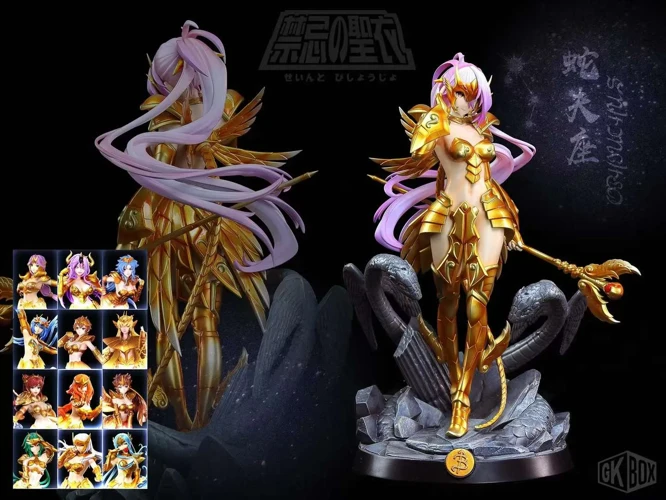
In conclusion, the exploration of Mayan mythology unveils a fascinating world of gods and goddesses, creation myths, rituals, and societal influences. The pantheon of divine deities played a central role in the Mayan civilization, with each god and goddess embodying various aspects of nature, fertility, and cosmic order. The rich tapestry of myths and legends surrounding Huracan, the Storm Keeper, Ixchel, the Moon Goddess, Itzamna, the Supreme Being, Kukulkan, the Feathered Serpent, and Chac, the Rain God, provides insights into the religious beliefs and spiritual practices of the Mayan people. The myths of creation, such as the Popol Vuh and the myth of the Four Suns, shed light on how the Mayans sought to understand and explain the origins of the world. Rituals and worship were integral to Mayan society, with blood sacrifice, sacred ceremonies, divination, and shamanism playing significant roles. The influence of Mayan mythology extended beyond the realms of religion and spirituality, impacting art, architecture, iconography, politics, social structure, and even the Mayan calendar system and astronomy. The intricately carved temples and buildings, the symbolism in artwork, and the alignment of celestial bodies all reflect the profound impact that these ancient beliefs had on Mayan culture. In summary, Mayan mythology is a captivating testament to the creativity, imagination, and spiritual depth of this remarkable civilization.
Frequently Asked Questions

1. Who was the most powerful deity in Mayan mythology?
In Mayan mythology, Itzamna was revered as the Supreme Being and considered the most powerful deity. He was associated with creation, wisdom, and healing.
2. What were some other significant gods and goddesses in Mayan mythology?
Aside from Itzamna, other significant deities in Mayan mythology included Huracan, the Storm Keeper who controlled hurricanes and storms, Ixchel, the Moon Goddess associated with fertility and childbirth, Kukulkan, the Feathered Serpent linked to wind and knowledge, and Chac, the Rain God who brought rainfall for agricultural prosperity.
3. What were the creation myths in Mayan mythology?
The Mayans had various creation myths, with one of the most well-known being the Popol Vuh. This myth describes the creation of the world and the birth of the first humans from maize, which was considered a sacred plant.
4. What legendary tale involved the defeat of the Lords of Xibalba?
The Hero Twins, Hunahpu and Xbalanque, embarked on a heroic journey to defeat the Lords of Xibalba, the Mayan underworld. Through cunning and bravery, they overcame numerous challenges and ultimately triumphed over the lords.
5. How did the Mayans practice divination and prophecy?
Mayans practiced divination and prophecy using various methods such as scrying, interpreting omens, and performing rituals using sacred objects like obsidian mirrors and animal bones. These practices were performed by specialized priests or shamans.
6. What was the significance of blood sacrifice in Mayan rituals?
Blood sacrifice played a vital role in Mayan rituals as it was believed to nourish and appease the gods. The blood of animals or humans was offered to ensure the continuation of life, fertility, and the well-being of the community.
7. How did Mayan society incorporate mythology into their political structure?
Mayan rulers often claimed divine lineage, tying themselves to specific gods and goddesses. Mythology was used to legitimize their authority and maintain social order. The ruler was seen as an intermediary between the earthly realm and the divine.
8. How did Mayan mythology influence art and architecture?
Mayan mythology had a profound influence on Mayan art and architecture. Depictions of gods and goddesses were intricately carved into temples and buildings. Mythological scenes were also commonly depicted in murals, pottery, and stone reliefs.
9. What role did shamans play in Mayan society?
Shamans held a significant role in Mayan society as intermediaries between the spiritual realm and the physical world. They were healers, diviners, and advisors, performing rituals, ceremonies, and offering guidance to individuals and the community.
10. What was the significance of the Mayan calendar and its connection to astronomy?
The Mayan calendar was intricately tied to astronomy, reflecting the Mayans’ advanced understanding of celestial movements. It was used for tracking time, predicting celestial events, and organizing religious festivals and rituals.
References
Frequently Asked Questions

1. Who were the divine deities in Mayan mythology?
The Mayan pantheon consisted of various gods and goddesses who played significant roles in different aspects of life, such as creation, nature, and celestial phenomena.
2. Why is Huracan known as the Storm Keeper?
Huracan was associated with storms, hurricanes, and wind. He was believed to control these powerful natural forces and bring about destruction or renewal.
3. What was the role of Ixchel, the Moon Goddess, in Mayan mythology?
Ixchel was revered as the Moon Goddess and the patroness of fertility, healing, and childbirth. She represented the feminine aspect of creation and was often depicted as a young woman or an old crone.
4. What made Itzamna the Supreme Being in Mayan mythology?
Itzamna, known as the Supreme Being, was the creator of all things and the ruler of the heavens. He was associated with wisdom, writing, and the calendar system.
5. Who was Kukulkan, the Feathered Serpent, in Mayan mythology?
Kukulkan was one of the most revered deities in Mayan mythology. He was depicted as a feathered serpent and was associated with life, wisdom, and knowledge.
6. What role did Chac, the Rain God, play in Mayan civilization?
Chac was believed to control rainfall and was essential for the cultivation of crops. He was often depicted with a reptilian appearance and represented the cycle of life and death.
7. What is the Popol Vuh, and how does it relate to the creation of the world?
The Popol Vuh is a sacred Mayan text that recounts the creation of the world and the origin of humans. It tells the story of the gods’ struggles and the creation of the first humans from maize dough.
8. Who were the Hero Twins, and what was their significance in Mayan mythology?
The Hero Twins, Hunahpu and Xbalanque, were central figures in the Mayan creation story. They defeated the Lords of Xibalba, the underworld, and restored balance to the world.
9. What is the myth of the Four Suns in Mayan mythology?
The myth of the Four Suns explains the cycles of creation and destruction in Mayan cosmology. Each sun represents a different era and ends in cataclysmic events, leading to the rise of a new sun.
10. How did Mayans use rituals and ceremonies to worship their deities?
The Mayans performed various rituals and ceremonies to connect with their gods and seek their favor. These rituals often involved blood sacrifice, sacred dances, and offerings to please and appease the deities.
References
- Maya Religion, Gods, Cosmos and religious rituals
- 5 Important Ancient Mayan Gods – Informative Blog
- All Mayan Gods (A to Z) and Their Roles – Maya Mythology







